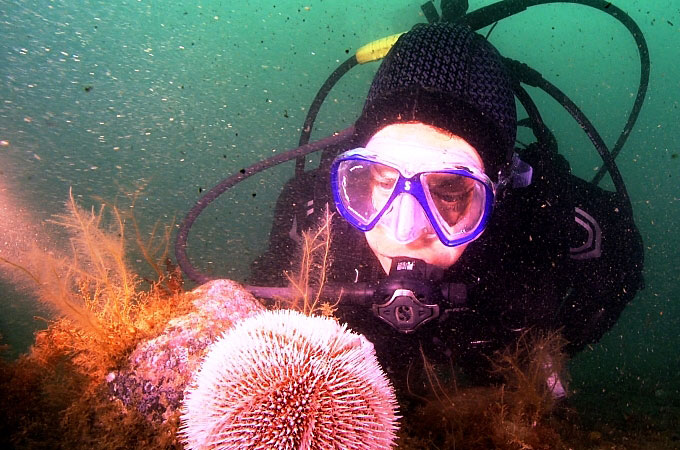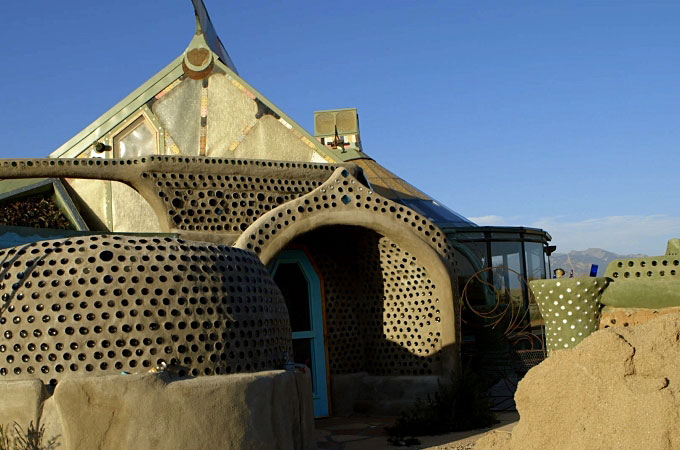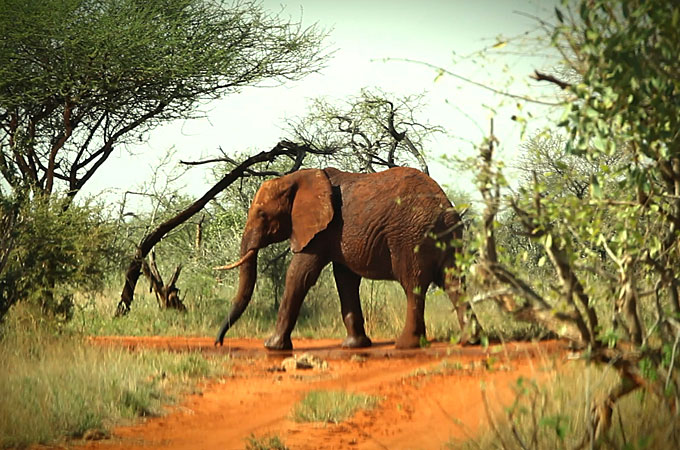The view from Earth
Earthrise reporters reflect on environmental initiatives they witnessed around the world in 2012.

Towards the end of this year, delegates from more than 170 countries gathered in Doha, the capital of Qatar, for the COP18 summit.
The timing was critical, with the Kyoto Protocol shortly due to expire.
Keep reading
list of 4 itemsAfter the Hurricane
World’s coral reefs face global bleaching crisis
Why is Germany maintaining economic ties with China?
Earthrise is Al Jazeera’s upbeat look at the individuals, communities and technologies tackling today’s environmental challenges.
Here, some of the show’s reporters reflect on the grassroots initiatives they have witnessed worldwide throughout the year and ask what those who attended the COP18 summit could learn from the people on the front lines of the battle against climate change.
| Brixton in transition |
Sylvia Rowley discusses her film about a south London neighbourhood’s efforts to sustain its local economy.
|
|
| Watch ‘Brixton in transition’ |
Walking through a council estate near my south London home, Agamemnon Otero talks about his vision for the area’s future. He sees rooftops lined with solar panels, community food gardens replacing barren turf, and free energy saving classes for residents.
These are not idle dreams. He has already set up the UK’s first inner-city renewable energy cooperative, Brixton Energy, which has installed hundreds of panels across six tower blocks. Weekly draught-busting classes are held at the community centre. And he has turned a local bus stop into a food plot.
Agamemnon is one of the many driven and inspiring individuals I have met while working on earthrise and I have no doubt that his diplomacy and determination were crucial to the co-operative’s success.
But do not let this fool you into thinking that government – and international negotiations such as those at COP18 – are not relevant.
In fact, the reason Agamemnon and his collaborators could afford to set up their co-operative is that the UK government subsidises people who want to generate their own renewable energy. Brixton Energy also received a government grant to help with setup costs.
And this funding is available thanks to environmental regulation, and a legally binding target to cut carbon emissions by 80 per cent by 2050.
In other words, legislation and government funding can be strong catalysts for community action. In Germany, where subsidies have been in place for over a decade, more than half of renewable energy is generated by homeowners or co-operatives.
In poorer countries, national and international funding is even more critical for success.
On earthrise we have seen great environmental projects in places such as Kenya, Borneo and Mexico. Some of these may end up being self-financing, whether it is generating electricity from scrap metal turbines, or turning rubbish heaps into a power source. But you cannot get away from the fact that setting up and scaling up these projects takes money.
Last year at the UN climate talks in Durban, a multi-billion dollar fund was launched to do exactly that. Backed by rich countries, the Green Climate Fund aims to provide $100bn by 2020 to help developing countries combat climate change, and cope with its effects. Despite some controversy over the way the cash will be distributed, that is no insignificant achievement.
It is true that some environmental projects are genuinely independent of any government. But even the most free-spirited green entrepreneurs would benefit if the authorities at least stopped bankrolling “the enemy”.
Fossil fuel subsidies are currently estimated to be worth around $1 trillion, and every dollar that brings down the price of petrol and jet fuel makes it harder for low carbon pioneers to compete. For example, Bio Fuel Systems, a Spanish firm developing carbon negative oil from algae, can only thrive if their product can rival the price of fossil oil.
Yes, global climate conferences are frustrating. Sometimes all hope of progress gets lost in a bureaucratic quagmire of sub-clauses, amendments and counter amendments. But we cannot just cut government out. Grassroots projects need their political will and hard cash in order to succeed.
| Battling adversity |
Gelareh Darabi says international negotiations need to recognise the vital role played by grassroots environmentalists.
|
|
| Watch ‘Battling adversity’ |
Reporting for earthrise has given me the rare opportunity to dive into the heart of global environmental initiatives and see for myself how many of the green solutions debated at world conferences, such as COP18, actually operate on the ground.
Whether it be a budding grassroots community project or a large-scale multinational undertaking, what I have discovered is that it is not simply innovation or policy that will protect these inspired programmes when there are sudden adversities. In an age where natural disasters and political uprisings are prevalent, it is the determined individuals behind these vital projects who keep them going.
Last February, when I travelled to The Virunga National Park in the Democratic Republic of Congo, things were looking up for the UNESCO World Heritage Site. After years of civil war crippled their operations, the park was once again hosting tourists in record numbers.
They were coming to DRC to witness Virunga’s breathtaking beauty and to make the famous trek to see the mountain gorillas. Our report featured the brave park rangers and their dedicated leader Emmanuel de Merode. There was much to be hopeful for.
Sadly, not long after our report aired the park had to be evacuated and closed after it was taken over by rebel army groups, such as M23. Poaching incidents rose and rangers lost their lives. Although eastern DR Congo was once again plunged into uncertainty, Emmanuel and his men stayed in Virunga as the first line of defence; negotiating, patrolling, and steering the park through the hardships.
Similarly, in Haiti’s Port-au-Prince, ecologist Sasha Kramer and the team from SOIL are back to work in the aftermath of the heavy winds and rain of Hurricane Sandy. In an area already struggling with terrible infrastructure and poverty since the 2010 earthquake, the grassroots group have installed 55 ecological sanitation (EcoSan) public toilets in IDP camps across Port-au-Prince and 150 household toilets.
 |
| An estimated 140 Virunga National Park rangers have been killed since 1996 [Al Jazeera] |
By safely transforming potentially lethal human waste into fertiliser, not only are SOIL protecting the water supply, they are also enriching the land. Sasha and her grassroots team are inspired by the Haitian people “who pick themselves up time and time again and continue to be so gracious and friendly”.
The pioneering environmental solutions we see on earthrise are sometimes fragile. They depend on political stability, good governance and relative calm. But when these things break down, it is inspiring individuals and groups on the ground who keep the work going.
International negotiations such as COP18 need to recognise the vital role played by these grassroots environmentalists – and to some degree they do. This year SOIL was presented with the ‘Land for Life Award’ at COP18, a prize designed to raise awareness of the scientists, community groups and individuals leading the way in sustainable land management.
If such conferences can be used as a chance to acknowledge and learn from the passionate leaders, such as Sasha and Emmanuel, on the front line, then I am all for them.
| The canaries in the mines |
Oliver Steeds notes that, at the current rate of decline, scientists predict our seas could be empty of fish within 40 years. But one Scottish island is fighting back.
|
|
| Watch ‘The canaries in the mines’ |
For every hour spent fishing today, fishermen and women land just six per cent of what they did 120 years ago. Put another way, they have to work 17 times harder to get the same catch as fishing folk did in the 19th century.
By 2048, the UN estimates that there will not be any fish in the oceans left to catch. So who is leading the fight against overfishing? In the UK at least, the solution is being driven by grassroots organisations.
In 2008, after a decade of campaigning, The Community of Arran Seabed Trust (COAST) managed to establish Scotland’s first fully protected marine reserve, one of only three in the whole of the UK. At only one square mile of Lamlash Bay, the No Take Zone is tiny, but has been enough to allow COAST to gather the scientific evidence to show that protected areas do help regenerate the local marine environment and improve fish populations.
While reporting in Arran for earthrise, we witnessed stocks of king and queen scallops growing well in the No Take Zone, and the protected area has become a tiny haven for spawning and feeding fish.
“Our surveys have shown there were more juvenile fish including whiting and haddock within the No Take Zone than outside,” says Howard Wood, the chairman of COAST.
 |
| Scientists want to create more marine reserves [Al Jazeera] |
Wood and scientists from York University believe it will take at least eight to ten more years before they start to see a healthy fishery, and Wood is now proposing a marine protected zone 100 times larger than the existing No Take Zone.
In the long term COAST’s success will depend on convincing the local fishing community of the economic as well as environmental benefits of protected areas.
David Currie, one of the local fishermen has already come round. “I think it is a good idea as it will give juvenile fish right round here plenty more ground to grow,” he explains.
But fishermen and women are not the only people organisations such as COAST need to persuade. Professor Roberts from York University believes that if we are to restore the health of the entire ocean, we need to go from protecting one per cent of its surface area to at least 25 per cent. Clearly, national and international efforts are needed, but Wood does not think governments are rising to the challenge.
“The biggest stumbling block in Scotland, in the UK and probably the entire world is the complete lack of political will. The short-termism of fisheries ministers and politicians is absolutely unbelievable,” he says. Wood also believes that business-backed lobby groups are purposefully trying to undermine their efforts.
Scientists, media, politicians and business would do well to give focus to grassroots organisations that are changing our blue planet. Throughout the world, local communities are often the canaries in the mine; the first to feel the impact of climate destabilisation or marine ecosystem collapse and the first to come up with solutions. Above the din of well-resourced and well-connected industry lobbyists, their voices need to be heard and their actions supported.
| From big thinkers to local heroes |
Russell Beard discusses the need for ecologists and practioners to be included in global climate talks.
|
|
| Watch our report on ‘local hero’ Mark Covington |
This year there was a big focus on sustainability and climate change following Rio+20, and in the lead up to COP18 in Doha. But increasingly these global forums are facing criticism because of the perceived disconnect between the political process and the ecological imperative for action.
A few weeks ago I was invited to a green growth forum which is seen as an agenda-setting precursor to the COP18 talks. Despite the positive intentions and impressive turnout of presidents, policy makers and finance executives, I could not help but feel that there was a gap at the table: for the ecologists and environmental activists; for the entrepreneurs and the innovators who toil at the interface between us and the planet and who are trying to reconcile this relationship. The remarkable individuals who are out there now, all over the world, actually doing something, not just talking about it.
When we search for stories on earthrise we are looking for genuine solutions to the long list of environmental challenges that we all face. Often these are so-called “bottom-up” grassroots projects that are the result of individuals or communities who are capable of imagining a cleaner, greener future and are using ingenuity, collaboration and hard work to make it happen.
But how do these grassroots solutions emerge and grow?
It starts with the “Big Thinkers” – those who have a big idea that they cannot keep to themselves – such as lawyer Polly Higgins who is on a mission to have “ecocide” recognised by the UN as an International Crime Against Peace.
This law, if ratified, could hold heads of state and CEOs personally responsible for damage to the environment inflicted by companies or countries over which they preside.
 |
| The arid New Mexico desert is home to a cluster of unusual buildings named ‘earthships’ [Al Jazeera] |
Or rebel architect Mike Reynolds – a proponent of radically sustainable living for the past 40 years and the creator of earthships, off-grid homes made from waste materials that act like living systems capable of supporting human life without costing the earth.
It is through action that these big thinkers become “Local Heroes”, inspiring individuals such as New Orleans tree planter Richie “don’t call me an environmentalist” Blink, who is out there right now planting mangrove trees and restoring New Orleans’ storm defence on the Mississippi Delta.
Or Welsh dairy farmer Wyn Evans, whose concerns about rising sea levels and the effect of climate change on his grandchildren’s generation drove him to adopt renewable energy units that put him 30 years ahead of the curve.
When we get behind these walking, talking catalysts we see genuine solutions beginning to emerge – community-led change which in many cases would have been impossible to effect from the top down.
For example, community energy initiative Brixton Energy is succeeding precisely because project director Agamemnon Otero is not from the council and does not represent an energy provider. Agamemnon is in the community knocking on doors, encouraging people to invest in a rooftop solar array that is enriching their community, and not just in a financial sense.
In the inner city of Detroit, amid the burnt-out houses and abandoned streets, there are the likes of community leader Mark Covington who we met when making Motown to Growtown. He and hundreds of other residents-turned-city-farmers are breaking the law by creating an urban agriculture movement to grow fresh, lower carbon produce in parts of the city where people must travel miles to get to a grocery store.
 |
| Earthworks is a productive urban farming hub in Detroit [Al Jazeera] |
Time and again we have seen green initiatives that also make financial sense, and that is when things really get moving.
Sweetwater Organics’ inner city Aquaponics farm provides Milwaukie with vegetables and fresh fish – reducing pressure on depleted ocean stocks and cutting down on food miles and storage costs.
And Veta La Palma, a truly sustainable Spanish fish farm that looks more like a nature reserve, benefits the environment while making an outstanding product.
In Return of Elvers we saw fishermen and conservationists working together to safeguard a species. By maintaining the commercial fishery, they ensure the survival of the market for eels, which in turn funds their myriad efforts to conserve the species.
At Gemasolar Concentrated Solar Power plant in southern Spain, we met the energetic entrepreneurs who have created the first commercial-scale concentrated solar plant – one that works 24/7 and saves 30,000 tonnes of CO2 per year in the process.
Gemasolar’s success would not have been possible without considerable investment and favourable feed-in tariffs (subsidies) from the government. Their support paved the way for increased private investment, which will in turn drive further advancements in the technology.
Reallocating scarce public finance is key is to catalysing private investment; because ultimately, without policies to divert investments away from carbon intensive development and into green growth, environmental projects will always be piecemeal.
As journalists and filmmakers, it is within our power to give a platform to the big thinkers and grassroots activists who are already making change happen. By giving a voice to the visionaries we can help them share their innovations and experiences, and in doing so perhaps inspire more people to follow their example.
| The spirit of enviro-entrepreneurialism |
Scott Corben tells us about a movement which unites people and shares their vision with others.
|
|
| Watch ‘The spirit of enviro-entrepreneurialism’ |
When I was travelling in Chile ten years ago I had a golden rule. If I needed a bus, I would go to a main road and wait. It did not matter where in the country I was nor what time of day it was. Before long there was always a bus.
I have a similar rule for earthrise stories. Look at any environmental issue anywhere in the world and you will soon find someone trying to do something about it. It does not matter whether it is in a remote part of Africa or the middle of a US city. There will always be someone.
Sometimes the stories come one at a time. Sometimes they come in threes.
In Kenya, three presented themselves immediately. Sam Duby in Kisumu has developed a way of turning an old car alternator into a low-cost wind turbine that is easy to assemble. Lucy King in Nairobi has enlisted African honeybees as unlikely advocates to broker a peace between hungry elephants and the farmers whose crops the weighty quadrupeds have targeted.
Helen and Kenya Mutiso in the Rift Valley teach local farmers about the financial and environmental benefits of growing indigenous trees, in addition to the lucrative fast-growing non-indigenous trees that farmers already know about.
California proved just as abundant. In the hi-tech labs of San Francisco there is a wave of young scientists looking to develop the next generation of smart “eco-materials” that might soon be commonplace. They are experimenting with energy-scavenging devices that harvest the ambient energy around electronic products and convert it into usable electricity.
They are surrounding office blocks with tubes of energy-generating algae that feed on polluting emissions from cars travelling on nearby roads. They are also developing plastics that utilise UV rays to heal scratches themselves, reducing non-recyclable waste.
 |
| Marauding gangs of elephants often raid farmers’ crops [Al Jazeera] |
I think what unites all these people is a spirit of what you might call “enviro-entrepreneurialism”. It is the desire to give their idea a go, see how it works in practice, fine-tune it, and then hopefully see their vision adopted by others.
I can imagine that conferences such as COP18 could provide an “enviro-entrepreneur” with an opportunity to spread the word and perhaps seek out new funding. But what else? For them, action speaks louder than words.
Over the past few days I have tried to apply my Chilean bus rule to Europe’s biggest and most interesting ongoing environmental story.
I have set myself the task of finding a positive angle on the world’s worst nuclear disaster. Surely someone in Chernobyl has come up with an awe-inspiring environmental idea? I think I have found the story – but you will have to wait until the next series of earthrise to know what it is.
What I can say is that it is unlikely to fix the problem. It is reckoned that the plutonium in Chernobyl will be a problem for all of imaginable time.
But whether or not they fix the problem is not really the issue. What is important is that they are already putting ideas into action – and not flying halfway around the world to sit around a large conference table in a large air-conditioned building to talk about it.